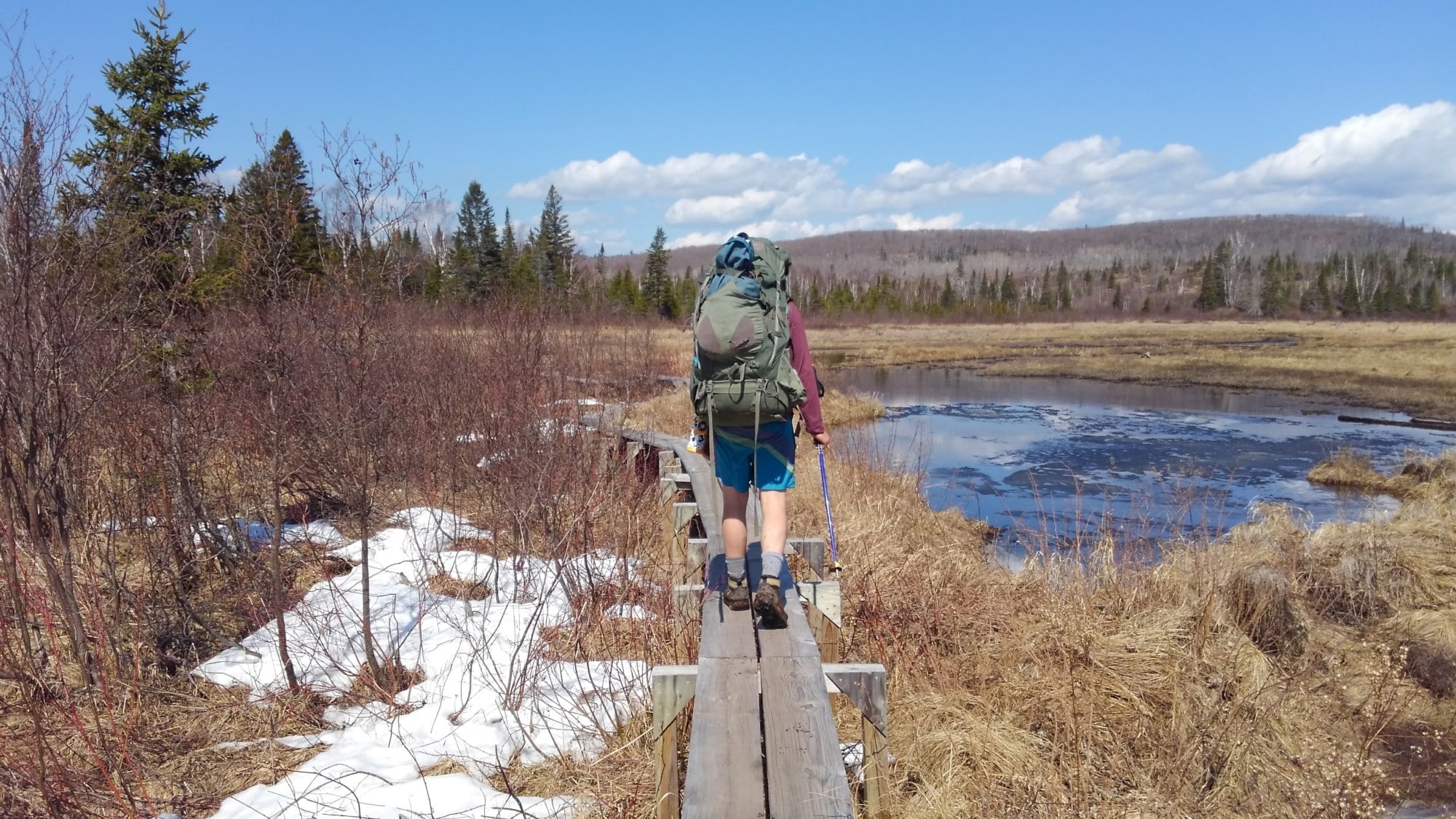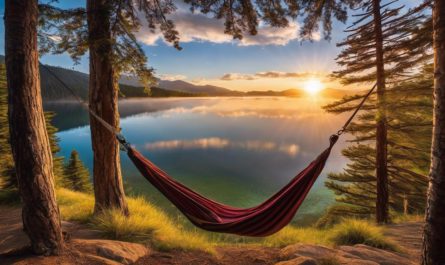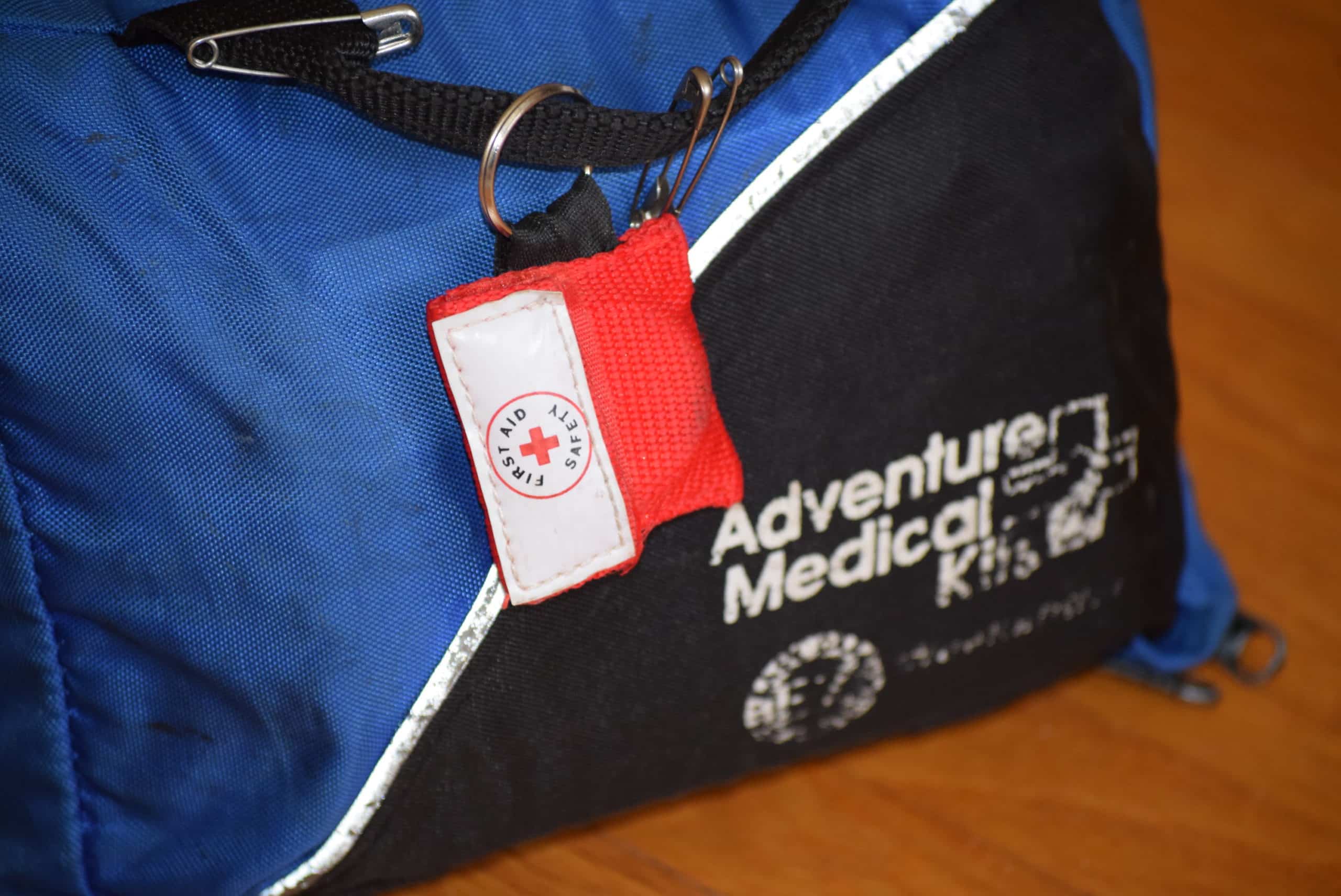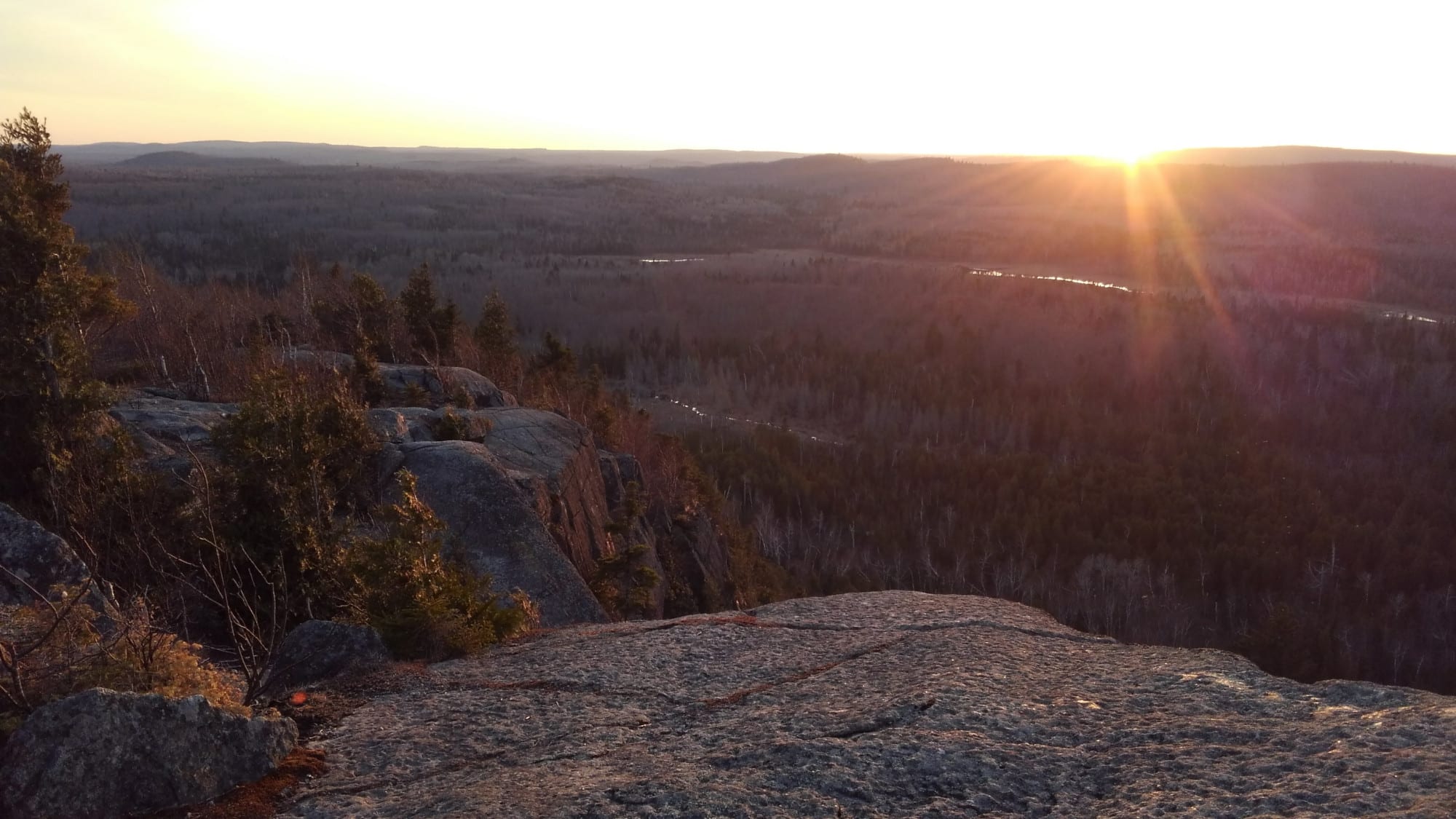This list of backpacking gear is meant to cut through the noise and tell you specifically what gear you need to hit the trail asap. To do this succinctly, I group some items under one umbrella. Alright, let’s get to it!
- Backpack
- Sleeping Bag
- Tent
- Cooking Kit
- Water System
- First Aid Kit
- Map and Compass
- Float Plan
- Probably your Smartphone
- Trail Clothes
Backpack
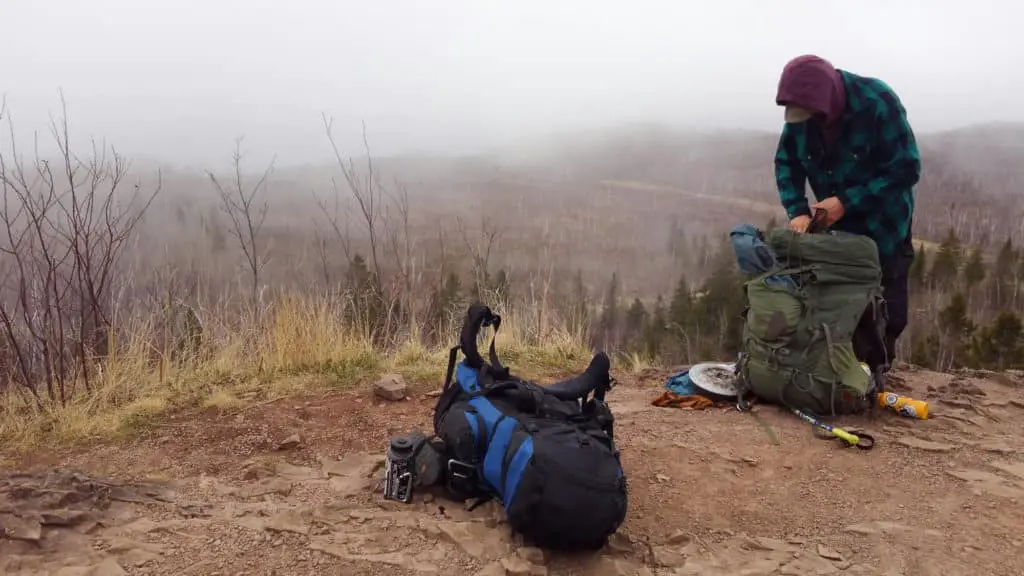
I would not recommend using your school bag by any means. It would help if you had a framed backpack. Most modern backpacking bags are internal frames. Your local gear shop would likely help you get sized up for what fits you personally. Generally speaking, unless you are a true minimalist going on short trips, I would not recommend getting anything smaller than 60 Liters. Internal pouches for a water bladder are awesome; some even come with them. I prefer ones with pockets for water bottles on the outside near the hips too.
Sleeping Bag
This is something you can get by with something on the cheaper side if you want. The climate and time of year you are going to use the bag make a difference. If you know you are only going camping in the summer, then you can get a cheaper sleeping bag temperature rated for only warmer temperatures.
If you go cold weather camping or like in the north like me, I almost pack a 25-degree bag, and that does me ok ¾ seasons. You can wad up your clothes for a pillow. Spring for one if you think you will struggle to sleep without one. Sleeping mats can really make a huge difference as a choice for backpacking gear in comfortable sleeping, too (list cheat number one).
Check out my guide for picking the perfect sleeping bag if you are unsure what to choose from the hundreds of choices out there.
Tent
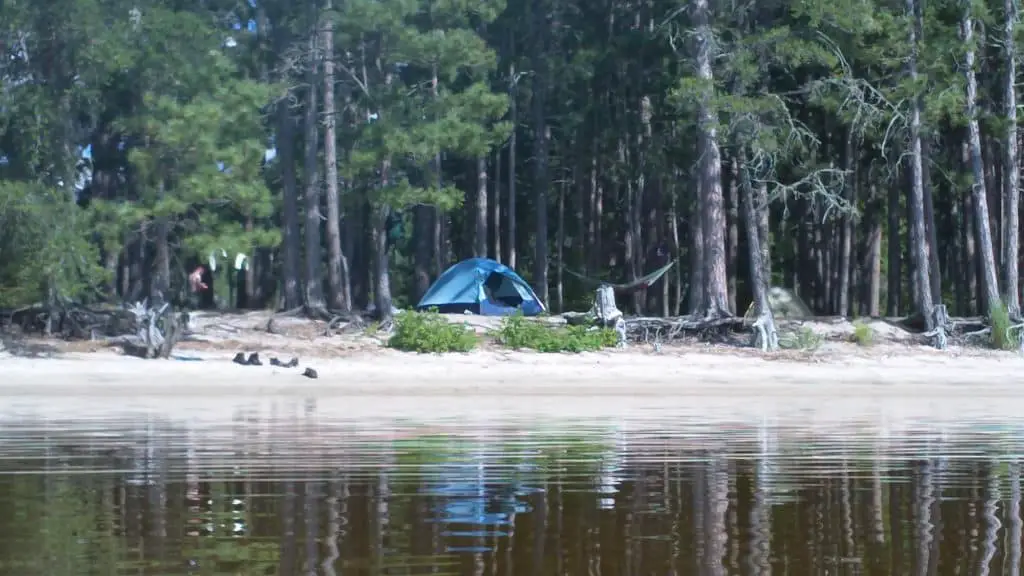
Because backpacking is the topic, the assumption is that you should gravitate towards a 2-person tent. My rationale for this is that a solo setup does shave weight; however, it is convenient to bring someone along with you to share a tent. I love the space in a two-person solo too. I have lugged around a two-person tent since I started backpacking and it doesn’t bother me. Just make the rain cover goes to the ground and cover the whole tent, if it downpours you’ll be glad you have it.
Cooking Kit
Okay, I’m cheating here again, but some items make sense to group together, and some may be optional, depending. Here you need a stove, fuel, pot, bowl, utensil (sporks are awesome), a mug, and a lighter. Depending on how you do this here, you may not even need the bowl. If you plan to bring mostly premade backpacking meals, you really only need to boil water and eat out of the package. I like to have coffee or tea, so I find the mug essential; it also works as a bowl.
As a stove goes, a Pocket Rocket and 2L pot is the easiest entry to backpacking stoves. Jetboil has come a long way here, and if you plan on just boiling water, it’s not a bad option. Lighter is usually for most stoves but serves as a backup; get a Bick.
Water System
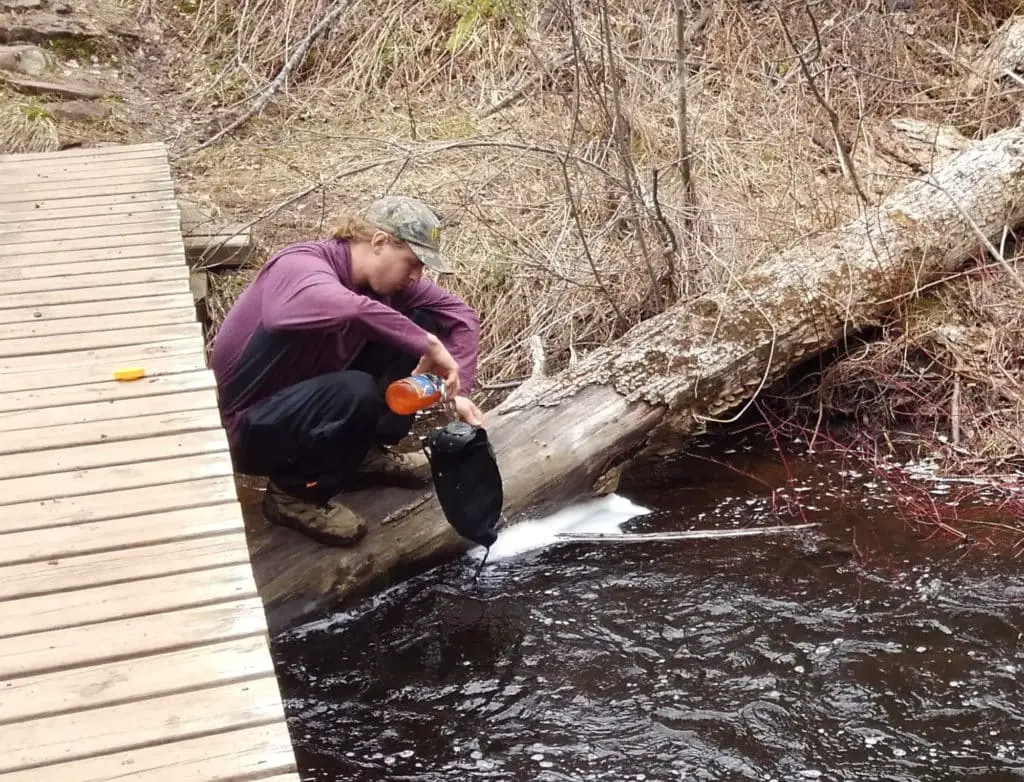
If you are backpacking, there are some differences in need here, depending on where in the country you are. My preference is to have a hydration bladder in the pack and two Nalgene water bottles as a backup. Clean water is non-negotiable, so I also carry a pump filter, although if I know I can rely on easy to access water, I will opt for my gravity filter every time. You can also use a bandana and filter it into your water bottle, but it’s a pain and will require some sanitization tablet. I wouldn’t mess with dirty water. Giardia sucks.
First Aid Kit
A premade first aid kit is good for starters, but you want to know what’s in it but how to use it too. I have made my own, and it had a bunch of things that your standard first aid kit may not come with.
Map and Compass
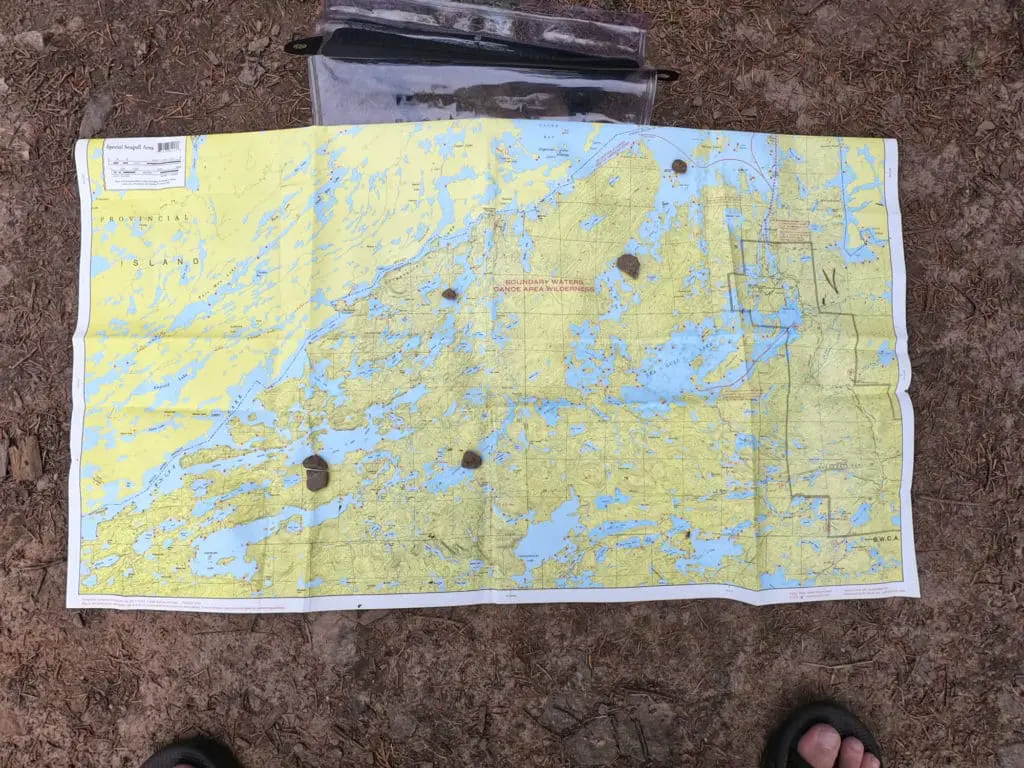
Definitely have a map of the area you plan to travel to. Something better than a printed google satellite image is best but has something that will give you reference points the whole way, at least. I will buy dedicated maps online well in advance. Bring a map case or at least a ziplock to protect the map. A soggy melted mess helps no one. Compass is a good backstop to make sure you know you’re going in the right direction. As a general rule, if the compass is smaller than a half-dollar, it’s not dependable.
Float Plan
This is SUPER IMPORTANT! Don’t let the position on the list fool you. Make sure someone you trust has your plan in writing. Where you start, ballpark ending location every day, when you will finish and exit, and when that person can expect to hear from you. Have a plan for them to follow if they do not hear from you. Have you read or seen 127 Hours? Yea, he didn’t leave a float plan. Consider this an essential part of your gear list.
Smartphone
This is a good fallback item for several reasons. It will probably have a camera, flashlight, GPS, and possible cell service. Here’s the thing though, put it in airplane mode and use it for photos and flashlight only. Please do not rely on it to stay charged or get reliable cell service. Often folks expect to have cell service on the trail and are put in bad situations because they died 3 hours into the trip searching for service that wasn’t there. In other words, it is a backup tool that you probably bring with you anyway but don’t rely upon it.
There are all sorts of hints on how to use a smartphone during a stranded situation that is worth checking out.
Trail Clothes
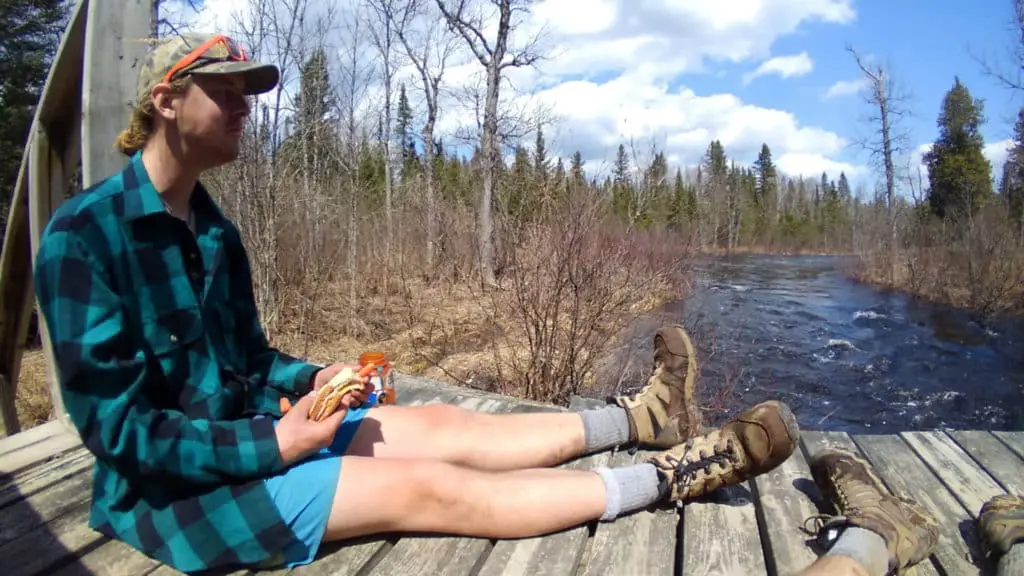
Again, cheating the list here because of multiple items, but it makes sense to group these items. Barebones, you can get away with two pairs of socks, pants, underwear, shirts, a warm layer, and probably a hat and sunglasses. Ditch cotton whenever possible. I prefer wool at almost every turn, but I love quick-dry pants. Get a rain jacket, cheap stuff works but plan on ditching it as soon as you get back if you had a wet trip. Gore-Tex is the standard for good waterproof rain jackets. Generally, boots with some ankle support are a good idea. You could argue for less or more here, but these are my recommendations.

